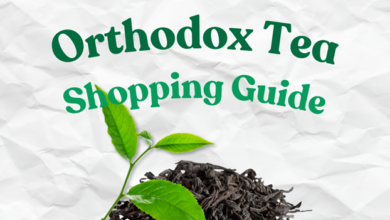What is The Importance of Typography in Web Design

When it comes to how consumers view and engage with a website, web typography is crucial. Since it deals with the format, presentation, and organisation of text on a web page, it is a vital component of the overall design. The significance of typography in web design in Melbourne and how it affects user experience will be covered in this article.
Understanding Typography
Typography is the arrangement of printed words to make them both aesthetically pleasing and readable. Typography in web design in Melbourne relates to the organization of content within paragraphs, point sizes, and font selections that make the intended meaning clear and easy to read.
Understanding Typography Impact
Readability and Legibility:
Ensuring text readability and legibility is one of typography’s main goals. Legibility denotes the ease with which individual characters may be identified from one another, whereas readability only refers to how simple it is for consumers to comprehend text. Making the right typographic decisions can significantly enhance both characteristics, increasing the content’s appeal and accessibility at the same time.
Emotional Appeal:
Typography has an emotional appeal that aids in the delivery of tone-related signals. Consumer perception of content is ultimately influenced by font size, colour, and typeface choice. For example, a whimsical font could add some fun to a kids’ website, while a sad font could convey seriousness in commercial websites.
Brand Recognition:
The broad use of typography in brand identity establishment is crucial because consistent communication across all platforms strengthens brand awareness and, consequently, user credibility. A strong brand presence can be achieved by setting a website apart from competitors with highly memorable and distinctive typography.
Typography Elements
Typeface Selection:
Selecting the right fonts has a significant impact on how a web design in Melbourne looks and feels. There are thousands of different typefaces, each with a unique personality type. When selecting one, keep your audience and the message you want them to grasp in mind.
Font Size and Weight:
In typography, font size and weight are also important considerations. Body writing typically uses smaller fonts, but headlines and titles typically use larger fonts. The thickness of characters, with bold fonts used for emphasis and conventional fonts for everyday text, is referred to as font-weight.
Accessibility and Typography:
Web design in Melbourne must prioritise accessibility, and typography is a key component in making sure that websites are usable by all users, including those with disabilities. When font, size, and spacing are chosen properly, those with vision impairments or reading challenges can easily navigate your website.
Typography Trends
Variable fonts:
This innovative technology enables real-time changes to a font type’s weight, width, and other characteristics. Thanks to this technology, typeface designers can now produce more dynamic and responsive designs that can adapt to different screen sizes and resolutions.
Serif vs. Sans-serif:
Serif and Sans-Serif fonts are the most often used font types in web design in Melbourne. Serif fonts differ from Sans-serif ones in that the characters include little decorative lines or strokes at the extremities of their characters. The tone of voice and readability requirements of the text frequently impact the choice of serif or sans-serif typeface.
Several Fonts in a Single Design:
Different typefaces can provide visual appeal and hierarchy when used effectively, guiding viewers through the material. However, it’s critical to use coordinating typefaces with strong readability ratings.
Tips to Choose Suitable Typography
- Considerations for Selecting Typeface Families: Legibility, brand presence, and compatibility with a variety of browsers and devices are all significant considerations when choosing typefaces for your website. Making sure you select web-safe fonts is another requirement to guarantee that your typography appears correctly on all user devices.
- Typography Testing and Evaluation: Using your selected font elements in various settings once they have been chosen guarantees that they will fulfil your web design in Melbourne objectives. Consider how typography will look on different screens and devices. Get user input so you can make any necessary changes.
Tips for Effective Typography
- Consistency Is Key: Cohesive professionalism is created by typographic uniformity. It’s best to utilise comparable typefaces, font sizes, and colours across a website to preserve visual coherence and strengthen brand identification.
- Employ Hierarchy to Direct Users: Typography hierarchy refers to the use of various font weights, sizes, and colours to denote the relative importance of different content items in the web design in Melbourne. This makes it easier for consumers to find what they’re looking for by enabling them to scan the page fast and comprehend its structure.
- Be Aware of Spacing and Alignment: Poor spacing or alignment severely detracts from the readability and visual appeal of typography. Generous line space enhances readability, and properly aligned text creates a clean, well-organised layout.
Conclusion
Typography affects readability, user experience, and brand identity, making it an important factor to take into account when designing a website. By carefully choosing and arranging typographic components, web designers can produce aesthetically pleasing and intuitively navigable web pages.



